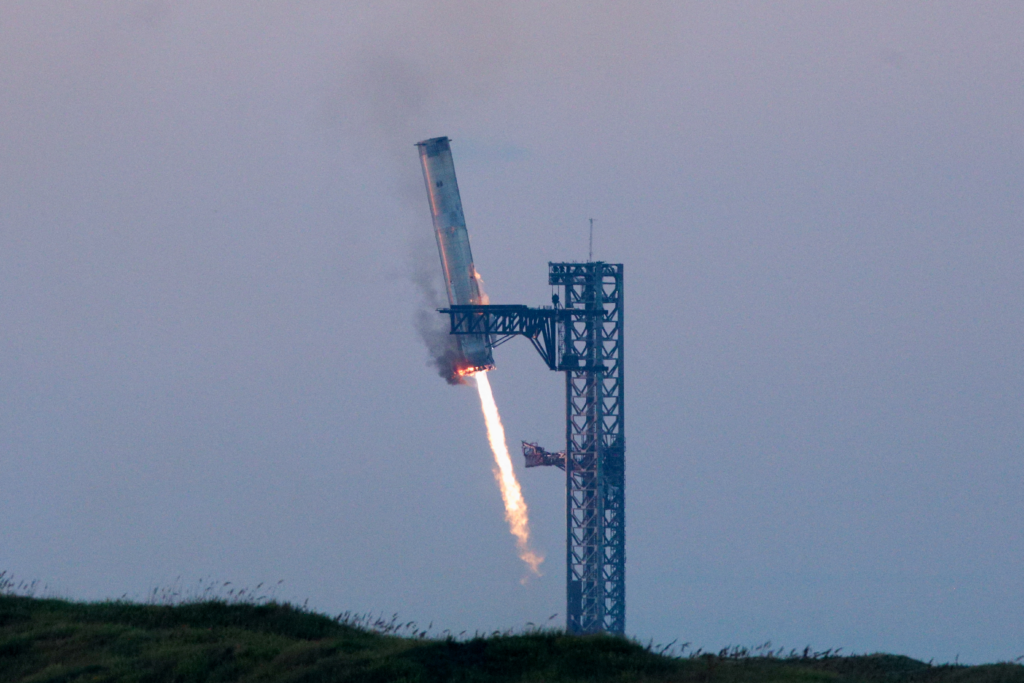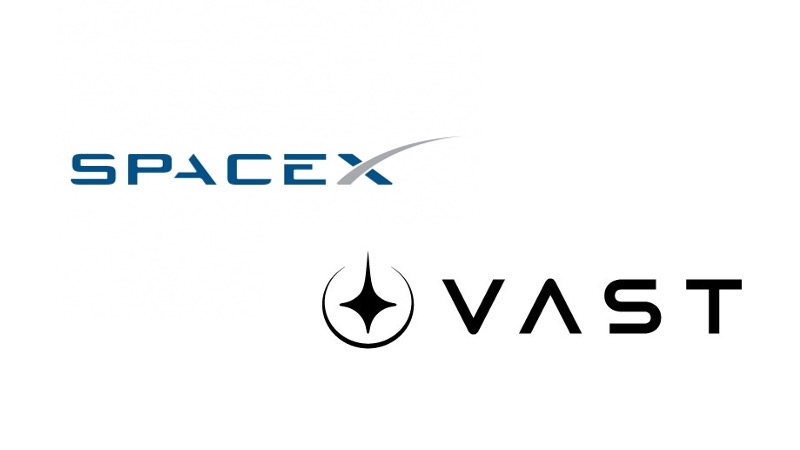Two upstart companies produced noteworthy advancements in space innovation while a government agency updated a secret project. SpaceX successfully tested an innovative booster-catching method for its Starship rocket, bringing a new level of precision to reusable rocket technology. On another front, Vast Space has joined NASA’s roster of potential International Space Station (ISS) replacements, unveiling plans for a modular space station named Haven-2. Both developments represents the private sector’s role in boosting space exploration potential and hastening human presence beyond Earth.
What’s Happening & Why This Matters
SpaceX’s Starship Success
In its fifth test flight, SpaceX’s Starship booster returned to its launch tower in an unprecedented “catch” maneuver, executed with the help of a specialized arm system known as “Mechazilla.” The booster, guided by its grid fins, angled itself back to the tower, where three Raptor engines slowed its descent, allowing the tower’s “chopsticks” to securely catch the stage. SpaceX’s Falcon 9 and Falcon Heavy rockets have historically achieved successful landings, but this method increases efficiency, reducing the time and resources needed for booster refurbishment.

SpaceX hopes this innovation will streamline the reuse of Starship boosters, making space launches faster and more cost-effective. Following the booster catch, Starship’s second stage reached a suborbital trajectory around Earth, performing a controlled descent and splashdown in the Indian Ocean. Elon Musk celebrated the achievement as a significant step toward making humanity a multiplanetary species, noting that such progress also supports NASA’s Artemis program to return astronauts to the Moon.
Vast Space and the Haven-2 Station
Long Beach-based Vast Space has now entered the competition for NASA’s Commercial Low Earth Orbit Development (CLD) program with its proposed Haven-2 station, an ambitious design building on its initial Haven-1 module. Haven-2 is set for a 2028 debut and will feature a 33-foot-long module as its foundational unit, with additional modules to follow, creating a structure reminiscent of a space “train.” By 2032, Vast plans to add a core module nearly 23 feet wide and several other units, ultimately forming a spoke-like structure that can integrate various international and specialized components, like a viewing cupola and robotic arms.

Unlike other space station concepts, Haven-2’s modular approach allows NASA to adapt the station to evolving mission requirements. The timing is crucial as NASA prepares to decommission the ISS by 2030. The CLD program aims to foster alternatives that cost less than the ISS’s estimated $4.1 billion annual expense. If NASA’s transition to a private station doesn’t align with the ISS’s planned end date, China’s Tiangong station could become the only operational station in low Earth orbit, potentially leading to a shift in global space presence.

Pentagon’s Secretive X-37B Spaceplane
As a rarity, the Pentagon revealed its X-37B spaceplane has been performing experiments in an unusually high orbit. This mission differs from previous flights, which stayed in low Earth orbit. This time, the X-37B operates in a highly elliptical orbit, ranging from 300 to 38,600 miles above Earth, crossing through the Van Allen radiation belts and various satellite paths.

Space Force updates indicate the mission involves “radiation effect experiments” and “space domain awareness technologies.” These experiments could benefit satellite resilience in high-radiation areas and provide intelligence on satellite tracking methods. Typically, the Pentagon remains silent on the X-37B’s missions, adding intrigue and speculation about its true objectives. The spaceplane has previously tested technologies like the Hall-effect ion thruster, showing its versatility for defense-related missions.
Future Partnerships’ Impacts
SpaceX’s success with Starship and Vast Space’s entry into NASA’s space station program illustrate the accelerating role of private companies in space. NASA has contracted SpaceX for Artemis missions, and Vast’s partnership with SpaceX for the launch of Haven-1 shows how collaboration between government and private entities is becoming central to long-term space missions. For NASA, private partners offer flexible, cost-effective options that could reduce reliance on a single organization’s infrastructure and promote competition.
TF Summary: What’s Next
SpaceX’s Starship advances promise to lower costs and increase the frequency of space travel, supporting missions from lunar exploration to eventual Mars expeditions. For Vast Space, the upcoming launch of Haven-1 and planned deployment of Haven-2 set the stage for a more flexible and scalable space station option. As NASA evaluates these options, the continued success of private sector ventures could drive quicker advancements in both lunar exploration and low-Earth orbit research.


